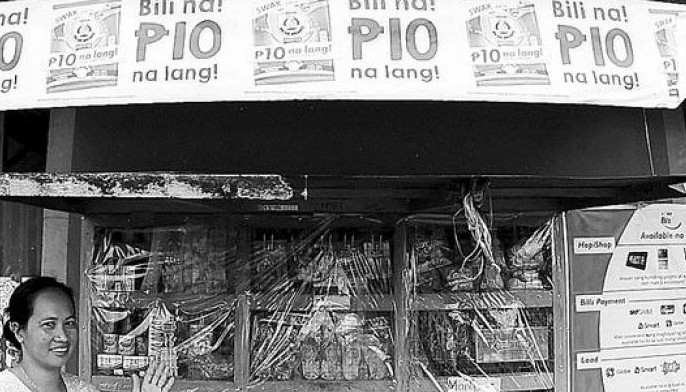Basilan port improvement a boon to fishermen
MALUSO, BASILAN , Philippines —Hajji Deflin Kuly and his 10 crew members easily maneuver their 40-foot outrigger banca to the dock here on the southwestern coast of Basilan, looking forward to their income from a good-sized catch.
Two years ago, bringing in the fish would have been a more complicated and costly matter. The old Maluso port was in such poor condition, fishermen feared that their hulls would be damaged on approach, so they would hire smaller boats to ferry their catch to the dock.
“That cost us as much as P20 per basket of fish,” recalled Kuly, president of the Maluso Fishermen’s Association.
In late 2007, however, USAID’s Growth with Equity in Mindanao (GEM) Program completed the rehabilitation of the Maluso Port, in partnership with the municipal and provincial governments. This included construction of a passenger terminal building, a pier for larger boats, and a 200-meter concrete stair landing for smaller vessels.
The facility is one of six port improvements projects completed by the GEM Program in western Mindanao, and is among the 40 regional impact projects it has built to date, in collaboration with national government agencies, the Autonomous Region in Muslim Mindanao, and local governments in conflict-affected areas in the region.
Now that he can directly dock his boat at the port, Kuly said, they can unload cargo more quickly, without having to pay extra ferrying costs. This, he said, has helped to increase his profits per fishing trip.
According to Jojo Camlian, manager of Maluso Port, passenger and cargo traffic have increased substantially since the port project’s completion, with landings of fresh fish and other marine products rising from 500,000 metric tons to 1.5 million metric tons in 2007-2008.
“Our monthly port collections have jumped from about P130,000 in 2006 to more than P290,000 in 2008,” he said, adding that this revenue is used for maintaining the port infrastructure and staff.
The improved facility is drawing more traders, which means that fisherfolk and aquaculture producers from nearby municipalities are no longer compelled to travel all the way to Zamboanga City on the mainland of Mindanao to sell their produce, now that they have the option of doing business in Maluso.
“Travel time between Sumisip municipality and Zamboanga by a wooden-hulled boat is about three hours, but it’s less than an hour between Sumisip and Maluso,” Camlian said. “Sellers and traders are able to save time and money by doing business here.”
According to Ka Isni Undin, chairman of the Tubigan Multi-Purpose Cooperative and a former Moro National Liberation Front (MNLF) combatant, the port upgrade has been a boon to the growing number of aquaculture farmers in the area.
“Quicker delivery to buyers allows us to maintain the freshness of our products, which therefore fetch higher prices,” said Undin. His cooperative, which farms tiger grouper fish exported to Hong Kong and China, was trained in high-value aquaculture through the GEM Program’s Targeted Commodity Expansion Project.
Camlian pointed out that the port project has also had a multiplier effect on the local economy, as small stores and other businesses have mushroomed in the vicinity of the port.
- Latest



























